Katherine L. Maier
Sediment and organic carbon transport and deposition driven by internal tides along Monterey Canyon, offshore California
Maier, Katherine L.; Rosenberger, Kurt J.; Paull, Charles K.; Gwiazda, Roberto; Gales, Jenny; Lorenson, Thomas; Barry, James P.; Talling, Peter J.; McGann, Mary; Xu, Jingping; Lundsten, Eve; Anderson, Krystle; Litvin, Steven Y.; Parsons, Daniel R.; Clare, Michael A.; Simmons, Stephen M.; Sumner, Esther J.; Cartigny, Matthieu J.B.
Authors
Kurt J. Rosenberger
Charles K. Paull
Roberto Gwiazda
Jenny Gales
Thomas Lorenson
James P. Barry
Professor Peter Talling peter.j.talling@durham.ac.uk
Professor
Mary McGann
Jingping Xu
Eve Lundsten
Krystle Anderson
Steven Y. Litvin
Daniel R. Parsons
Michael A. Clare
Stephen M. Simmons
Esther J. Sumner
Dr Matthieu Cartigny matthieu.j.cartigny@durham.ac.uk
Associate Professor
Abstract
Submarine canyons are globally important conduits for sediment and organic carbon transport into the deep sea. Using a novel dataset from Monterey Canyon, offshore central California, that includes an extensive array of water column sampling devices, we address how fine-grained sediment and organic carbon are transported, mixed, fractionated, and buried along a submarine canyon. Anderson-type sediment traps were deployed 10–300 m above the seafloor on a suite of moorings anchored between 278 and 1849 m water depths along the axial channel of Monterey Canyon during three consecutive 6-month deployments (2015–2017). Tidal currents within the canyon suspended and transported fine-grained sediment and organic carbon that were captured in sediment traps, which record the composition of sediment and organic carbon transport along the canyon. High sediment accumulation rates in traps increased up-canyon and near the seafloor, where fine-scale (<1 cm) layering was increasingly distinctive in CT scans. There was no along-canyon trend in the organic carbon composition (percent modern carbon and isotopic signatures) among trap locations, suggesting effective mixing. Organic carbon content (weight percent total organic carbon) and excess 210Pb activities (dpm/g) increased down-canyon, reflecting reduced flux of sediment and organic carbon into deeper water, more distal traps. Differing organic carbon signatures in traps compared with previous measurements of seabed deposits along Monterey Canyon suggest that organic carbon transported through the canyon with internal tides may not be consistently recorded in seafloor deposits. First-order estimates from comparing organic carbon content of core and trap samples results in low organic carbon specific burial efficiency (ranging from ~26% to ~0.1%) and suggests that the modern upper Monterey Canyon may not be an effective sink for carbon. Organic carbon isotopic signatures from sediment traps in the water column show more marine influence than seafloor sediment cores; this is likely due to the deposition and reworking of seafloor deposits by sediment density flows and preferential consumption of fresh marine organic carbon on the seafloor, which is better preserved in the traps. Sediment and remaining organic carbon in canyon floor and lower flank deposits preferentially reflect episodic sediment density flow events that are unrelated to internal tides. This study provides a quantified example and conceptual model for internal-tide-related sediment and organic carbon transport, mixing, and burial trends along a submarine canyon that are likely to be similar in many canyons worldwide.
Citation
Maier, K. L., Rosenberger, K. J., Paull, C. K., Gwiazda, R., Gales, J., Lorenson, T., …Cartigny, M. J. (2019). Sediment and organic carbon transport and deposition driven by internal tides along Monterey Canyon, offshore California. Deep Sea Research Part I: Oceanographic Research Papers, 153, Article 103108. https://doi.org/10.1016/j.dsr.2019.103108
| Journal Article Type | Article |
|---|---|
| Acceptance Date | Sep 6, 2019 |
| Online Publication Date | Sep 12, 2019 |
| Publication Date | 2019-11 |
| Deposit Date | Jan 27, 2020 |
| Journal | Deep Sea Research Part I: Oceanographic Research Papers |
| Print ISSN | 0967-0637 |
| Publisher | Elsevier |
| Peer Reviewed | Peer Reviewed |
| Volume | 153 |
| Article Number | 103108 |
| DOI | https://doi.org/10.1016/j.dsr.2019.103108 |
| Public URL | https://durham-repository.worktribe.com/output/1278056 |
You might also like
Predicting turbidity current activity offshore from meltwater-fed river deltas
(2023)
Journal Article
Carbon and sediment fluxes inhibited in the submarine Congo Canyon by landslide-damming
(2022)
Journal Article
Longest sediment flows yet measured show how major rivers connect efficiently to deep sea
(2022)
Journal Article
Downloadable Citations
About Durham Research Online (DRO)
Administrator e-mail: dro.admin@durham.ac.uk
This application uses the following open-source libraries:
SheetJS Community Edition
Apache License Version 2.0 (http://www.apache.org/licenses/)
PDF.js
Apache License Version 2.0 (http://www.apache.org/licenses/)
Font Awesome
SIL OFL 1.1 (http://scripts.sil.org/OFL)
MIT License (http://opensource.org/licenses/mit-license.html)
CC BY 3.0 ( http://creativecommons.org/licenses/by/3.0/)
Powered by Worktribe © 2024
Advanced Search
